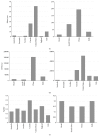Food Waste to Energy: An Overview of Sustainable Approaches for Food Waste Management and Nutrient Recycling
- PMID: 28293629
- PMCID: PMC5331173
- DOI: 10.1155/2017/2370927
Food Waste to Energy: An Overview of Sustainable Approaches for Food Waste Management and Nutrient Recycling
Abstract
Food wastage and its accumulation are becoming a critical problem around the globe due to continuous increase of the world population. The exponential growth in food waste is imposing serious threats to our society like environmental pollution, health risk, and scarcity of dumping land. There is an urgent need to take appropriate measures to reduce food waste burden by adopting standard management practices. Currently, various kinds of approaches are investigated in waste food processing and management for societal benefits and applications. Anaerobic digestion approach has appeared as one of the most ecofriendly and promising solutions for food wastes management, energy, and nutrient production, which can contribute to world's ever-increasing energy requirements. Here, we have briefly described and explored the different aspects of anaerobic biodegrading approaches for food waste, effects of cosubstrates, effect of environmental factors, contribution of microbial population, and available computational resources for food waste management researches.
Conflict of interest statement
The authors declare that they have no conflict of interests.
Figures




References
-
- FAO. Towards the Future we Want: End Hunger and Make the Transition to Sustainable Agricultural and Food Systems. Food and Agriculture Organization of the United Nations Rome; 2012.
-
- Melikoglu M., Lin C. S. K., Webb C. Analysing global food waste problem: pinpointing the facts and estimating the energy content. Central European Journal of Engineering. 2013;3(2):157–164. doi: 10.2478/s13531-012-0058-5. - DOI
-
- Agarwal A., Singhmar A., Kulshrestha M., Mittal A. K. Municipal solid waste recycling and associated markets in Delhi, India. Resources, Conservation and Recycling. 2005;44(1):73–90. doi: 10.1016/j.resconrec.2004.09.007. - DOI
-
- Kumar K. N., Goel S. Characterization of Municipal Solid Waste (MSW) and a proposed management plan for Kharagpur, West Bengal, India. Resources, Conservation and Recycling. 2009;53(3):166–174. doi: 10.1016/j.resconrec.2008.11.004. - DOI
-
- Kumar S., Bhattacharyya J. K., Vaidya A. N., Chakrabarti T., Devotta S., Akolkar A. B. Assessment of the status of municipal solid waste management in metro cities, state capitals, class I cities, and class II towns in India: an insight. Waste Management. 2009;29(2):883–895. doi: 10.1016/j.wasman.2008.04.011. - DOI - PubMed
Publication types
MeSH terms
Substances
LinkOut - more resources
Full Text Sources
Other Literature Sources

